Kamal Nasrollahi
Balancing Privacy and Action Performance: A Penalty-Driven Approach to Image Anonymization
Apr 19, 2025

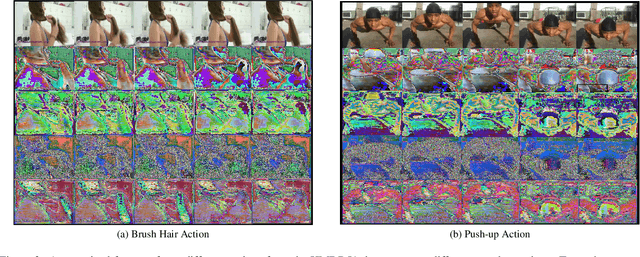

Abstract:The rapid development of video surveillance systems for object detection, tracking, activity recognition, and anomaly detection has revolutionized our day-to-day lives while setting alarms for privacy concerns. It isn't easy to strike a balance between visual privacy and action recognition performance in most computer vision models. Is it possible to safeguard privacy without sacrificing performance? It poses a formidable challenge, as even minor privacy enhancements can lead to substantial performance degradation. To address this challenge, we propose a privacy-preserving image anonymization technique that optimizes the anonymizer using penalties from the utility branch, ensuring improved action recognition performance while minimally affecting privacy leakage. This approach addresses the trade-off between minimizing privacy leakage and maintaining high action performance. The proposed approach is primarily designed to align with the regulatory standards of the EU AI Act and GDPR, ensuring the protection of personally identifiable information while maintaining action performance. To the best of our knowledge, we are the first to introduce a feature-based penalty scheme that exclusively controls the action features, allowing freedom to anonymize private attributes. Extensive experiments were conducted to validate the effectiveness of the proposed method. The results demonstrate that applying a penalty to anonymizer from utility branch enhances action performance while maintaining nearly consistent privacy leakage across different penalty settings.
Video Anomaly Detection with Contours - A Study
Mar 25, 2025Abstract:In Pose-based Video Anomaly Detection prior art is rooted on the assumption that abnormal events can be mostly regarded as a result of uncommon human behavior. Opposed to utilizing skeleton representations of humans, however, we investigate the potential of learning recurrent motion patterns of normal human behavior using 2D contours. Keeping all advantages of pose-based methods, such as increased object anonymization, the shift from human skeletons to contours is hypothesized to leave the opportunity to cover more object categories open for future research. We propose formulating the problem as a regression and a classification task, and additionally explore two distinct data representation techniques for contours. To further reduce the computational complexity of Pose-based Video Anomaly Detection solutions, all methods in this study are based on shallow Neural Networks from the field of Deep Learning, and evaluated on the three most prominent benchmark datasets within Video Anomaly Detection and their human-related counterparts, totaling six datasets. Our results indicate that this novel perspective on Pose-based Video Anomaly Detection marks a promising direction for future research.
Machine Unlearning in Hyperbolic vs. Euclidean Multimodal Contrastive Learning: Adapting Alignment Calibration to MERU
Mar 19, 2025



Abstract:Machine unlearning methods have become increasingly important for selective concept removal in large pre-trained models. While recent work has explored unlearning in Euclidean contrastive vision-language models, the effectiveness of concept removal in hyperbolic spaces remains unexplored. This paper investigates machine unlearning in hyperbolic contrastive learning by adapting Alignment Calibration to MERU, a model that embeds images and text in hyperbolic space to better capture semantic hierarchies. Through systematic experiments and ablation studies, we demonstrate that hyperbolic geometry offers distinct advantages for concept removal, achieving near perfect forgetting with reasonable performance on retained concepts, particularly when scaling to multiple concept removal. Our approach introduces hyperbolic-specific components including entailment calibration and norm regularization that leverage the unique properties of hyperbolic space. Comparative analysis with Euclidean models reveals fundamental differences in unlearning dynamics, with hyperbolic unlearning reorganizing the semantic hierarchy while Euclidean approaches merely disconnect cross-modal associations. These findings not only advance machine unlearning techniques but also provide insights into the geometric properties that influence concept representation and removal in multimodal models. Source code available at https://github.com/alex-pv01/HAC
YOLO11-JDE: Fast and Accurate Multi-Object Tracking with Self-Supervised Re-ID
Jan 23, 2025Abstract:We introduce YOLO11-JDE, a fast and accurate multi-object tracking (MOT) solution that combines real-time object detection with self-supervised Re-Identification (Re-ID). By incorporating a dedicated Re-ID branch into YOLO11s, our model performs Joint Detection and Embedding (JDE), generating appearance features for each detection. The Re-ID branch is trained in a fully self-supervised setting while simultaneously training for detection, eliminating the need for costly identity-labeled datasets. The triplet loss, with hard positive and semi-hard negative mining strategies, is used for learning discriminative embeddings. Data association is enhanced with a custom tracking implementation that successfully integrates motion, appearance, and location cues. YOLO11-JDE achieves competitive results on MOT17 and MOT20 benchmarks, surpassing existing JDE methods in terms of FPS and using up to ten times fewer parameters. Thus, making our method a highly attractive solution for real-world applications.
Verifying Machine Unlearning with Explainable AI
Nov 20, 2024
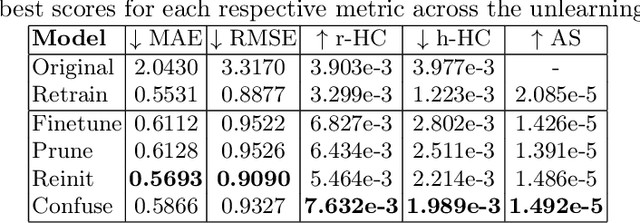
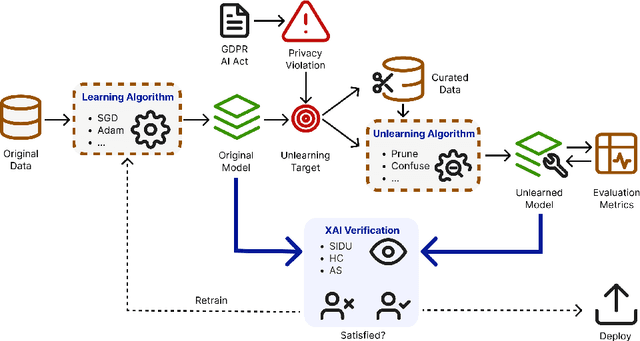
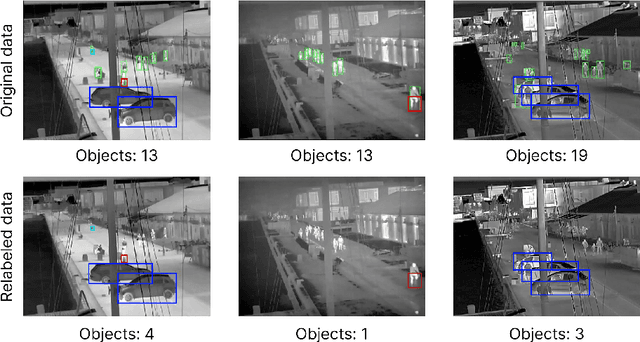
Abstract:We investigate the effectiveness of Explainable AI (XAI) in verifying Machine Unlearning (MU) within the context of harbor front monitoring, focusing on data privacy and regulatory compliance. With the increasing need to adhere to privacy legislation such as the General Data Protection Regulation (GDPR), traditional methods of retraining ML models for data deletions prove impractical due to their complexity and resource demands. MU offers a solution by enabling models to selectively forget specific learned patterns without full retraining. We explore various removal techniques, including data relabeling, and model perturbation. Then, we leverage attribution-based XAI to discuss the effects of unlearning on model performance. Our proof-of-concept introduces feature importance as an innovative verification step for MU, expanding beyond traditional metrics and demonstrating techniques' ability to reduce reliance on undesired patterns. Additionally, we propose two novel XAI-based metrics, Heatmap Coverage (HC) and Attention Shift (AS), to evaluate the effectiveness of these methods. This approach not only highlights how XAI can complement MU by providing effective verification, but also sets the stage for future research to enhance their joint integration.
Bounding Boxes and Probabilistic Graphical Models: Video Anomaly Detection Simplified
Jul 08, 2024Abstract:In this study, we formulate the task of Video Anomaly Detection as a probabilistic analysis of object bounding boxes. We hypothesize that the representation of objects via their bounding boxes only, can be sufficient to successfully identify anomalous events in a scene. The implied value of this approach is increased object anonymization, faster model training and fewer computational resources. This can particularly benefit applications within video surveillance running on edge devices such as cameras. We design our model based on human reasoning which lends itself to explaining model output in human-understandable terms. Meanwhile, the slowest model trains within less than 7 seconds on a 11th Generation Intel Core i9 Processor. While our approach constitutes a drastic reduction of problem feature space in comparison with prior art, we show that this does not result in a reduction in performance: the results we report are highly competitive on the benchmark datasets CUHK Avenue and ShanghaiTech, and significantly exceed on the latest State-of-the-Art results on StreetScene, which has so far proven to be the most challenging VAD dataset.
Visual Context-Aware Person Fall Detection
Apr 11, 2024Abstract:As the global population ages, the number of fall-related incidents is on the rise. Effective fall detection systems, specifically in healthcare sector, are crucial to mitigate the risks associated with such events. This study evaluates the role of visual context, including background objects, on the accuracy of fall detection classifiers. We present a segmentation pipeline to semi-automatically separate individuals and objects in images. Well-established models like ResNet-18, EfficientNetV2-S, and Swin-Small are trained and evaluated. During training, pixel-based transformations are applied to segmented objects, and the models are then evaluated on raw images without segmentation. Our findings highlight the significant influence of visual context on fall detection. The application of Gaussian blur to the image background notably improves the performance and generalization capabilities of all models. Background objects such as beds, chairs, or wheelchairs can challenge fall detection systems, leading to false positive alarms. However, we demonstrate that object-specific contextual transformations during training effectively mitigate this challenge. Further analysis using saliency maps supports our observation that visual context is crucial in classification tasks. We create both dataset processing API and segmentation pipeline, available at https://github.com/A-NGJ/image-segmentation-cli.
CL-MAE: Curriculum-Learned Masked Autoencoders
Aug 31, 2023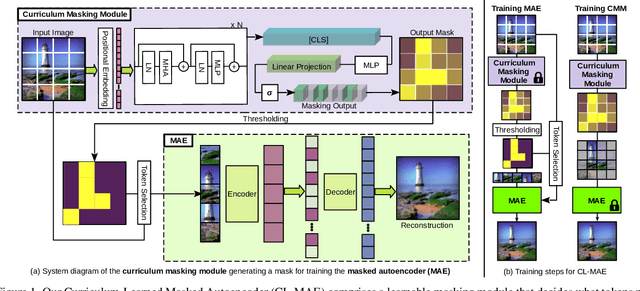
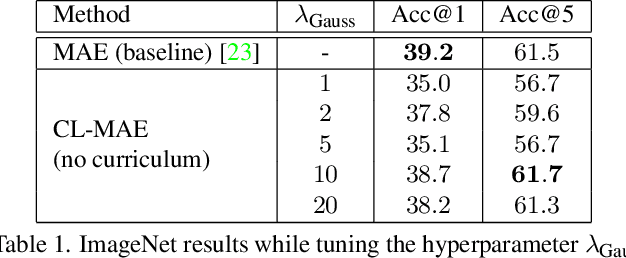
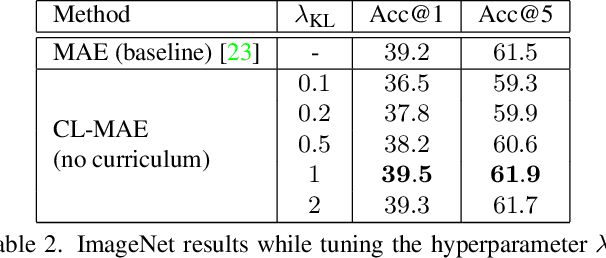
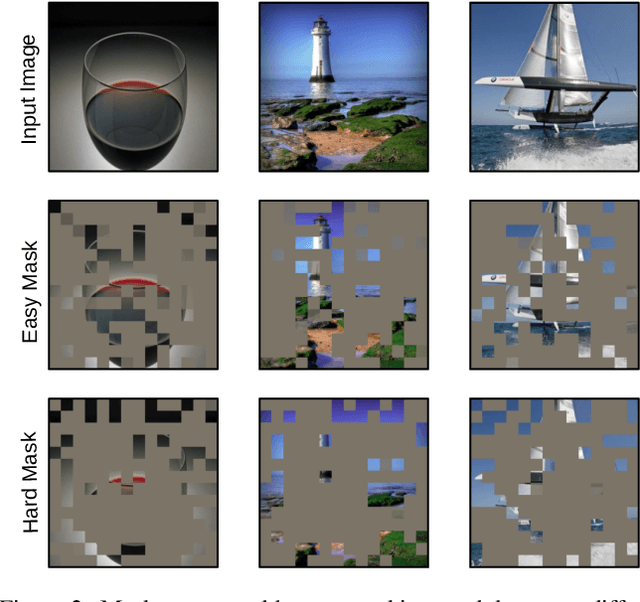
Abstract:Masked image modeling has been demonstrated as a powerful pretext task for generating robust representations that can be effectively generalized across multiple downstream tasks. Typically, this approach involves randomly masking patches (tokens) in input images, with the masking strategy remaining unchanged during training. In this paper, we propose a curriculum learning approach that updates the masking strategy to continually increase the complexity of the self-supervised reconstruction task. We conjecture that, by gradually increasing the task complexity, the model can learn more sophisticated and transferable representations. To facilitate this, we introduce a novel learnable masking module that possesses the capability to generate masks of different complexities, and integrate the proposed module into masked autoencoders (MAE). Our module is jointly trained with the MAE, while adjusting its behavior during training, transitioning from a partner to the MAE (optimizing the same reconstruction loss) to an adversary (optimizing the opposite loss), while passing through a neutral state. The transition between these behaviors is smooth, being regulated by a factor that is multiplied with the reconstruction loss of the masking module. The resulting training procedure generates an easy-to-hard curriculum. We train our Curriculum-Learned Masked Autoencoder (CL-MAE) on ImageNet and show that it exhibits superior representation learning capabilities compared to MAE. The empirical results on five downstream tasks confirm our conjecture, demonstrating that curriculum learning can be successfully used to self-supervise masked autoencoders.
Self-Supervised Masked Convolutional Transformer Block for Anomaly Detection
Sep 25, 2022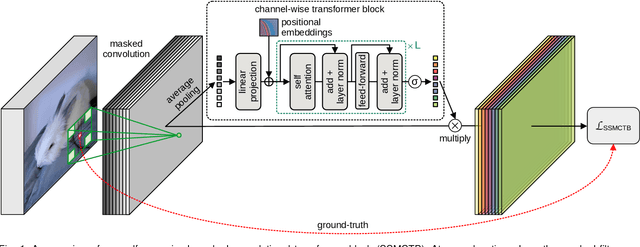
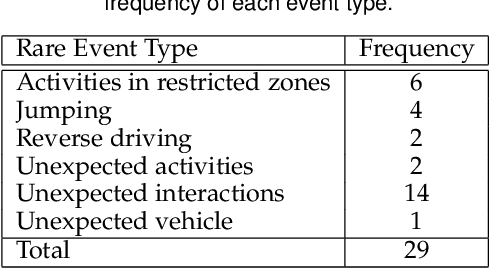
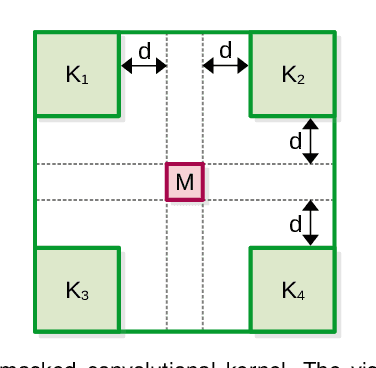
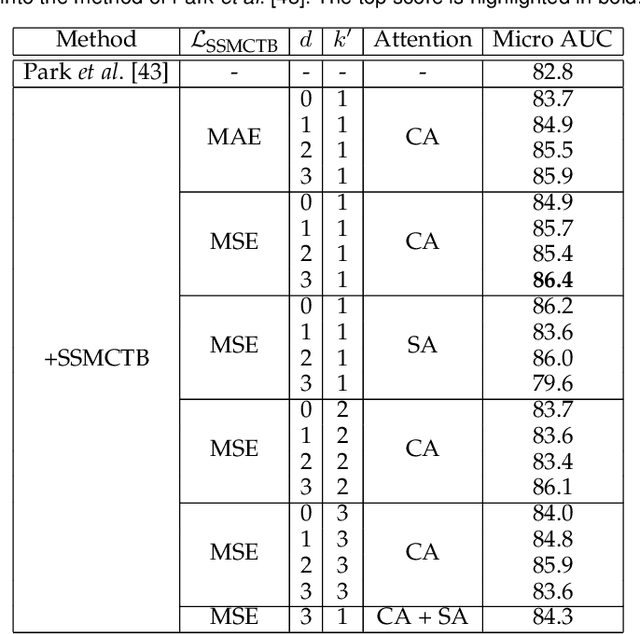
Abstract:Anomaly detection has recently gained increasing attention in the field of computer vision, likely due to its broad set of applications ranging from product fault detection on industrial production lines and impending event detection in video surveillance to finding lesions in medical scans. Regardless of the domain, anomaly detection is typically framed as a one-class classification task, where the learning is conducted on normal examples only. An entire family of successful anomaly detection methods is based on learning to reconstruct masked normal inputs (e.g. patches, future frames, etc.) and exerting the magnitude of the reconstruction error as an indicator for the abnormality level. Unlike other reconstruction-based methods, we present a novel self-supervised masked convolutional transformer block (SSMCTB) that comprises the reconstruction-based functionality at a core architectural level. The proposed self-supervised block is extremely flexible, enabling information masking at any layer of a neural network and being compatible with a wide range of neural architectures. In this work, we extend our previous self-supervised predictive convolutional attentive block (SSPCAB) with a 3D masked convolutional layer, as well as a transformer for channel-wise attention. Furthermore, we show that our block is applicable to a wider variety of tasks, adding anomaly detection in medical images and thermal videos to the previously considered tasks based on RGB images and surveillance videos. We exhibit the generality and flexibility of SSMCTB by integrating it into multiple state-of-the-art neural models for anomaly detection, bringing forth empirical results that confirm considerable performance improvements on five benchmarks: MVTec AD, BRATS, Avenue, ShanghaiTech, and Thermal Rare Event. We release our code and data as open source at https://github.com/ristea/ssmctb.
SSMTL++: Revisiting Self-Supervised Multi-Task Learning for Video Anomaly Detection
Jul 16, 2022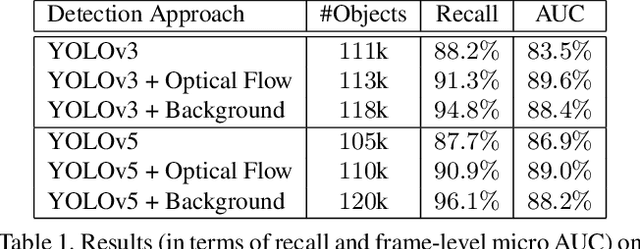
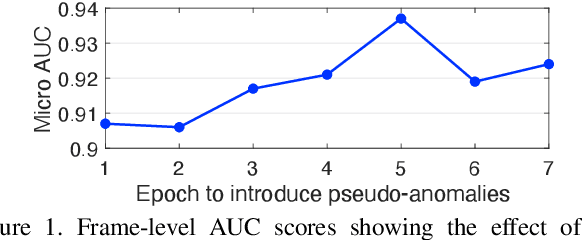
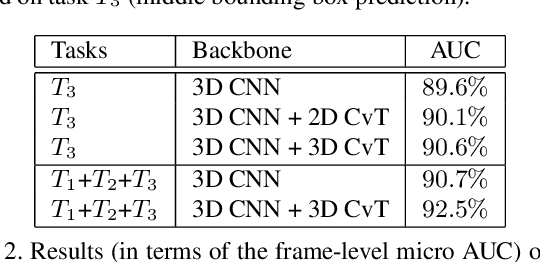
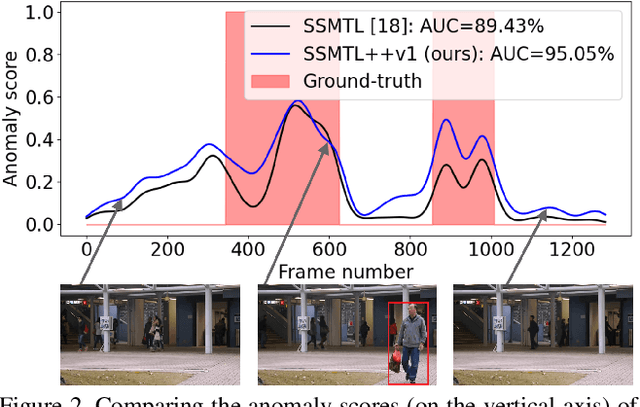
Abstract:A self-supervised multi-task learning (SSMTL) framework for video anomaly detection was recently introduced in literature. Due to its highly accurate results, the method attracted the attention of many researchers. In this work, we revisit the self-supervised multi-task learning framework, proposing several updates to the original method. First, we study various detection methods, e.g. based on detecting high-motion regions using optical flow or background subtraction, since we believe the currently used pre-trained YOLOv3 is suboptimal, e.g. objects in motion or objects from unknown classes are never detected. Second, we modernize the 3D convolutional backbone by introducing multi-head self-attention modules, inspired by the recent success of vision transformers. As such, we alternatively introduce both 2D and 3D convolutional vision transformer (CvT) blocks. Third, in our attempt to further improve the model, we study additional self-supervised learning tasks, such as predicting segmentation maps through knowledge distillation, solving jigsaw puzzles, estimating body pose through knowledge distillation, predicting masked regions (inpainting), and adversarial learning with pseudo-anomalies. We conduct experiments to assess the performance impact of the introduced changes. Upon finding more promising configurations of the framework, dubbed SSMTL++v1 and SSMTL++v2, we extend our preliminary experiments to more data sets, demonstrating that our performance gains are consistent across all data sets. In most cases, our results on Avenue, ShanghaiTech and UBnormal raise the state-of-the-art performance to a new level.
 Add to Chrome
Add to Chrome Add to Firefox
Add to Firefox Add to Edge
Add to Edge